| Pages:
1
2
3 |
Diablo
Hazard to Others
  
Posts: 113
Registered: 17-9-2011
Member Is Offline
Mood: Autodidactic
|
|
I wonder if this would make a good substrate for lead dioxide anodes?
|
|
|
plante1999
International Hazard
    
Posts: 1936
Registered: 27-12-2010
Member Is Offline
Mood: Mad as a hatter
|
|
maybe but sincerely go for a commercial MMO anode.
I never asked for this.
|
|
|
dann2
International Hazard
    
Posts: 1523
Registered: 31-1-2007
Member Is Offline
Mood: No Mood
|
|
No
|
|
|
Swede
Hazard to Others
  
Posts: 491
Registered: 4-9-2008
Member Is Offline
Mood: No Mood
|
|
Interesting thread I missed... yesterday I was browsing the internet looking for ruthenium chloride, thinking I'd try to roll my own MMO for fun, and
the price was staggering, many hundreds of $$ for 5 to 10 grams.
It's hard to beat the "real deal" for chlorate. On that failed cell I made with the separate electrode chamber, when it jammed up, it ran overnight
at 60 amps with just a couple of liters of volume, with the temperature near boiling, and no doubt took the liquor down to near zero chloride. The
cathodes were horribly warped, but after I wiped off the anode, the MMO looked as good as it did before the run, no degradation at all that I could
see.
It's a shame MMO won't make perchlorate. Or there's not some magic added catalyst that would help it along. Our problems would be solved, but then
we'd not be faced with the fun and challenge!
|
|
|
jpsmith123
National Hazard
   
Posts: 764
Registered: 24-6-2005
Member Is Offline
Mood: No Mood
|
|
Hello Swede,
There are a few things that seem promising (IMO) but haven't been tried yet. I was planning on doing some experimenting myself, but I just keep
getting side-tracked (I never should have bought a lathe and a milling machine). Anyway, one idea is to electrodeposit a thin layer of Bi2O3 over MMO.
Bi2O3 occurs in several crystal phases and I don't know how important it would be for perchlorate purposes but the delta phase (supposedly the most
desirable polymorph for some applications at least) has been electrodeposited at low temperature as per this paper.
|
|
|
Swede
Hazard to Others
  
Posts: 491
Registered: 4-9-2008
Member Is Offline
Mood: No Mood
|
|
Hi JP - cool find on that paper. I need to read it in some detail. I have a couple of Bi salts stashed away, but not the nitrate. Anything that
shows promise, isn't a precious metal, is worth pursuing. Lead Dioxide has been done to death, with not all that much success, at least on the
amateur level. And you end up with a toxic brew when you're done.
So you got sucked into the black void of hobby machining?  I've been doing it
for years, and fine machine tools don't go well with chemicals, especially mineral acids. Any time I do anything with HCl or HNO3, I take it WAY
outside, away from my tools, because otherwise they end up dusted with rust. Nasty stuff. I've had entire racks of tools rust because a jug of HCl
was in the vicinity. I've been doing it
for years, and fine machine tools don't go well with chemicals, especially mineral acids. Any time I do anything with HCl or HNO3, I take it WAY
outside, away from my tools, because otherwise they end up dusted with rust. Nasty stuff. I've had entire racks of tools rust because a jug of HCl
was in the vicinity.
What are you making with your tools?
|
|
|
jpsmith123
National Hazard
   
Posts: 764
Registered: 24-6-2005
Member Is Offline
Mood: No Mood
|
|
So far I've been mostly working with plastics and some brass. (I'm interested in high voltage pulsed-power stuff).
I got so frustrated trying to do simple things - without much success - that I finally went out and bought a mini lathe. And then later a mini mill.
I've made various coil formers, potting cups, coils, feed-through insulators, and complete high voltage, high frequency transformers. And also voltage
multipliers.
(Right now I'm refurbishing some used high power spark gap switches I got from ebay).
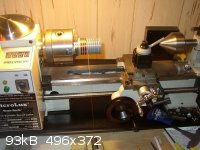 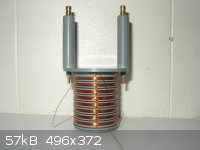 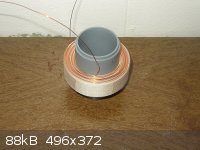 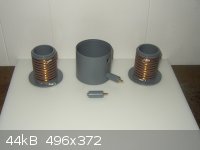 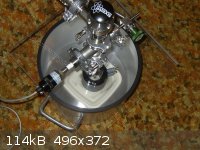 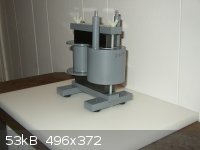 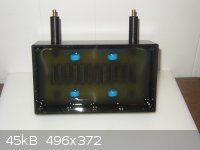 
##################################
Anyway I have some Bi2O3, some bismuth rod, and some SnCl2 and SnO2. I've been meaning to try a few things - coatings put on over MMO - but I just
kept getting distracted...and I only have a small work area which is just overcrowded right now.
BTW for anyone working with lead compounds (or other heavy metals), I found a few interesting studies on pubmed, regarding getting rid of it from your
body. There's some evidence that "modified citrus pectin" will mobilize and help excrete it. (Modified citrus pectin is avaiable as a nutritional
supplement).
Phytother Res. 2006 Oct;20(10):859-64.
The effect of modified citrus pectin on urinary excretion of toxic elements.
Eliaz I, Hotchkiss AT, Fishman ML, Rode D.
SourceAmitabha Medical Clinic and Healing Center, 7064 Corline Ct. Ste A, Sebastopol, CA 95472, USA.
Abstract
This study was undertaken to evaluate the effect of modified citrus pectin (MCP) on the urinary excretion of toxic elements in healthy individuals.
MCP is a reduced molecular weight pectin (weight-average molar mass = 15,400) that is mostly linear homogalacturonan with a 3.8% degree of
esterification and approximately 10% rhamnogalacturonan II based on the presence of 2-keto-3-deoxy-octonic acid. Subjects ingested 15 g of MCP
(PectaSol, EcoNugenics Inc., Santa Rosa, California 95407) each day for 5 days and 20 g on day 6. Twenty-four hour urine samples were collected on day
1 and day 6 for comparison with baseline. The urine samples were analysed for toxic and essential elements. In the first 24 h of MCP administration
the urinary excretion of arsenic increased significantly (130%, p < 0.05). On day 6, urinary excretion was increased significantly for cadmium
(150%, p < 0.05). In addition, lead showed a dramatic increase in excretion (560%, p < 0.08). This pilot trial provides the first evidence that
oral administration of MCP increases significantly the urinary excretion of toxic metals in subjects with a 'normal' body load of metals. It is
suggested that systemic chelation of toxic metals by MCP may in part be attributable to the presence of rhamnogalacturonan II, which has been shown
previously to chelate metals.
Copyright 2006 John Wiley & Sons, Ltd.
PMID: 16835878 [PubMed - indexed for MEDLINE]
Altern Ther Health Med. 2008 Jul-Aug;14(4):34-8.
The role of modified citrus pectin as an effective chelator of lead in children hospitalized with toxic lead levels.
Zhao ZY, Liang L, Fan X, Yu Z, Hotchkiss AT, Wilk BJ, Eliaz I.
SourceDepartment of Medicine, Children's Hospital, Zhejiang University School of Medicine, Hangzhou, Republic of China.
Erratum in
Altern Ther Health Med. 2008 Nov-Dec;14(6):18.
Abstract
CONTEXT: Lead toxicity is an ongoing concern worldwide, and children, the most vulnerable to the long-lasting effects of lead exposure, are in urgent
need of a safe and effective heavy metal chelating agent to overcome the heavy metals and lead exposure challenges they face day to day.
OBJECTIVE: This clinical study was performed to determine if the oral administration of modified citrus pectin (MCP) is effective at lowering lead
toxicity in the blood of children between the ages of 5 and 12 years.
METHOD: Hospitalized children with a blood serum level greater than 20 microg/dL, as measured by graphite furnace atomic absorption spectrometry
(GFAAS), who had not received any form of chelating and/or detoxification medication for 3 months prior were given 15 g of MCP (PectaSol) in 3 divided
dosages a day. Blood serum and 24-hour urine excretion collection GFAAS analysis were performed on day 0, day 14, day 21, and day 28.
RESULT: This study showed a dramatic decrease in blood serum levels of lead (P = .0016; 161% average change) and a dramatic increase in 24-hour urine
collection (P = .0007; 132% average change).
CONCLUSION: The need for a gentle, safe heavy metal-chelating agent, especially for children with high environmental chronic exposure, is great. The
dramatic results and no observed adverse effects in this pilot study along with previous reports of the safe and effective use of MCP in adults
indicate that MCP could be such an agent. Further studies to confirm its benefits are justified.
PMID: 18616067 [PubMed - indexed for MEDLINE]
[Edited on 5-7-2012 by jpsmith123]
|
|
|
Swede
Hazard to Others
  
Posts: 491
Registered: 4-9-2008
Member Is Offline
Mood: No Mood
|
|
jpsmith, that is some superb and high-quality work! The coils caught my attention right away. I am into miniature IC engines, and in need of a
small, scale spark coil (primary and secondary), I decided to wind my own. The secondary wire is incredibly fine stuff, much smaller than a human
hair, and breaks easily. And if broken in the middle of a wind, the coil is scrapped.
Anyway, I engineered a CNC coil winding machine using two stepper motors from old 5.25" floppy drives, and software written using Visual Basic. The
Spindle turns slowly, and the laydown system drops the wire into a coil spaced exactly the width of the Cu wire itself.
The many layers of secondary were interleaved with sections of kapton tape. It worked nice, in the end:



Back OT a bit... I've found a machining capability to be a HUGE asset for electrochemistry. I've lost track of the number of unique fittings I've
made from virgin PTFE and PET stock, delrin too. It gives one special capabilities, but it does come at a cost.
Re: Pb... I've got a few bottles of various chelators, and when I was working with kilos of Pb nitrate, I used them. Probably overly paranoid, but
it's one of those things that when you think about it too much, it gets on your nerves. I even made some Pb detection swabs using Rhodezinic (sp?)
acid that would turn magenta with the detection of Pb ions. When I wiped down my work area, I found lead all over the place. After that, I went at
it with dozens of moist paper towels, put my Pb salts away, and haven't plated lead since. But I plan on it, eventually.
|
|
|
jpsmith123
National Hazard
   
Posts: 764
Registered: 24-6-2005
Member Is Offline
Mood: No Mood
|
|
Wow! That's some intricate coil winding machine ya got there! (BTW I thought my OCD was bad until you came along, Swede  ) )
Anyway, with regard to anodes, one thing I'm doing (very slowly) is getting set up to do some electro-deposition experiments using an arbitrary
waveform generator and an audio amplifier. (I just got the amplifier circuit board populated a few days ago - it's a simple LM3886 based circuit).
In his MMO patents, IIRC, Beer used low voltage AC (stepped-down mains AC I presume), but I've seen more recent papers where oxides were
electrodeposited using non-sinusoidal AC voltages, e.g., high frequency pulses with a certain duty cycle. That's what I someday would like to try with
Bismuth (and/or Bismuth & Tin) oxide over MMO.
I think Dann2 tried to put Bi2O3 & SnO2 directly over Ti, by way of the dip and bake method, but the Ti passivated, IIRC. I'm not sure if he tried
it over MMO, but I don't think he did, as I don't recall any discussion of it here anywhere.
So, with regard to putting some Bi or Bi & Sn oxide over MMO, it's all a wide open area for experimentation, AFAIK.
|
|
|
watson.fawkes
International Hazard
    
Posts: 2793
Registered: 16-8-2008
Member Is Offline
Mood: No Mood
|
|
Quote: Originally posted by jpsmith123  | | Anyway, with regard to anodes, one thing I'm doing (very slowly) is getting set up to do some electro-deposition experiments using an arbitrary
waveform generator and an audio amplifier. |
FYI. Certain commercial plating system use negative-going pulses.
They're at low duty cycle and apparently they work by discharging the effective-capacitor formed by the polarization region of the electrode. If you
want to do this, you can add an H-bridge circuit to the output and tie it to the sign of the waveform.
|
|
|
Swede
Hazard to Others
  
Posts: 491
Registered: 4-9-2008
Member Is Offline
Mood: No Mood
|
|
All of the "deposition" processes are fascinating, and traditionally only the realm of institutions. It'd be awesome to see something set up in a
home lab. Press on, please!
|
|
|
ElectroWin
Hazard to Others
  
Posts: 224
Registered: 5-3-2011
Member Is Offline
Mood: No Mood
|
|
I have given up on this, and plan to go with platinized titanium
|
|
|
| Pages:
1
2
3 |
|